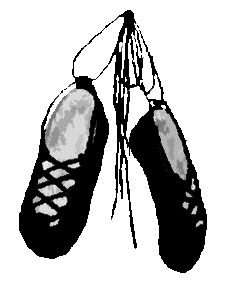

Flat Feet

Flat Feet
Also known as:
Fallen Arches



Shoe Recommendations:
(your mileage may vary)
based on foot width

Foot Description - Does This Foot Description Fit?
Flat arches can contribute to plantar fasciitis and improper alignment of the legs. In ballet terms, it’s not the most aesthetically pleasing since the art form prides itself on stunningly curved arches. However, there are exercises you can do to strengthen your feet and improve your arch. Try the classic Towel Scrunch: Sit in a chair with your feet on the floor in front of you. Lay a hand towel down on the floor at the tip of your toes, and grab the towel with your toes, inching the fabric closer and closer to you, until the entire towel gathers underneath your arch. This will not dramatically increase your arch, but it will strengthen the muscles in your arch. To reduce cramping and increase flexibility, place a golf ball or tennis ball underneath your arch and roll.


Challenges
While this type of foot may not be aesthetically pleasing, it is still strong and able to function normally. However, fallen arches can affect the way a person’s body is aligned when standing, walking, or running. The risk of pain in the ankles, knees, or hips becomes significantly greater for those with flat feet. If your footprint looks like a complete foot (i.e., is totally filled in without much of an inward curve in the center), you likely have flat feet. This causes you “pronate” when you walk or run (meaning, your foot rolls inward)–which is great for shock absorption but not so great for your knees and legs, or your chances of developing plantar fasciitis as your arch is strained.

Just for Fun Foot Fortune-Telling
Those with flat arches are said to be social and extroverted.
Most likely to create a great dance program!


